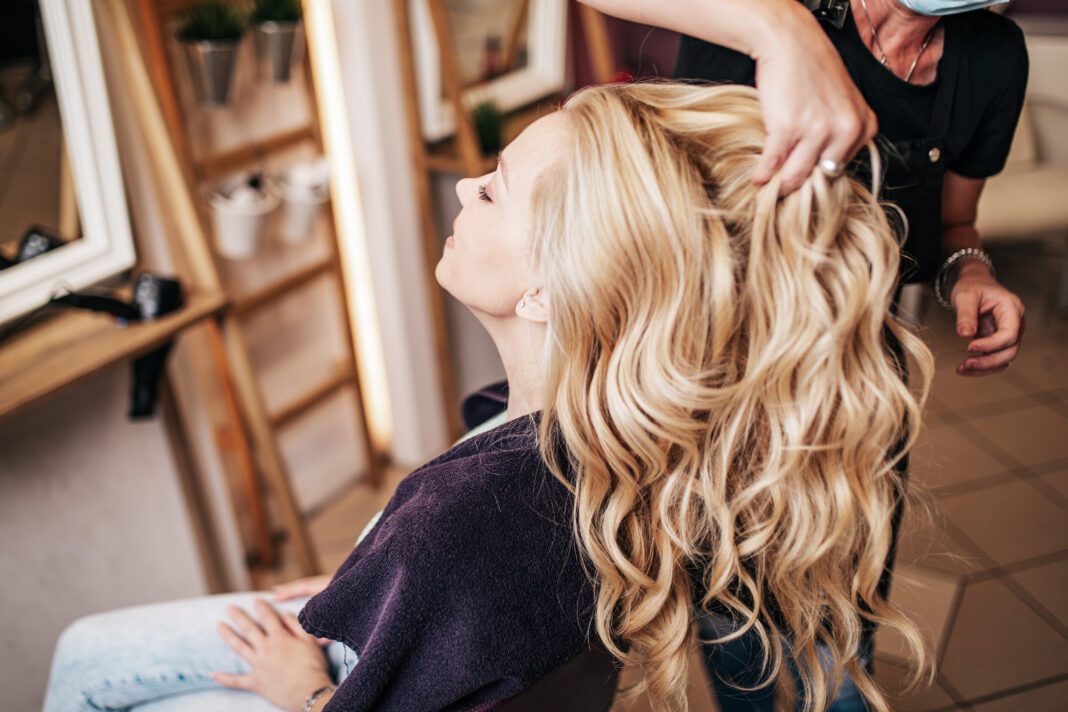
Should you shampoo twice? Do you need a showerhead purifier? Expert Rachel Eggie Gibbs talks healthy hair tips
Silky, healthy hair is always in style. But an abundance of easy yet damage-causing tools (we’re looking at you, blow dry brush) and hair health “hacks” make it difficult to achieve those luscious hair goals. Rachel Eggie Gibbs, owner of EGGIE Salon Studio, offers a clearer path to healthy hair in the Q&A below.
Should you always shampoo twice?
Yes, shampooing twice can be beneficial, especially if you use a lot of styling products or have oily hair. The first shampoo helps to break down and remove surface oil, dirt and product buildup, while the second shampoo cleanses the hair and scalp more deeply, ensuring a thorough cleaning.
How often should you clean your hairbrush, and how do you do so properly?
You should clean your hairbrush at least once a month. Here’s how to do it properly:
- Remove hair: Use a comb or your fingers to pull out any hair caught in the brush bristles.
- Soak in soapy water: Fill a bowl with warm water and add a few drops of mild shampoo. Soak the brush for about 10 to 15 minutes.
- Scrub: Use an old toothbrush to gently scrub between the bristles and remove any buildup.
- Rinse and dry: Rise the brush thoroughly with clean water. Shake off excess water and let it air dry with the bristles facing down.
Are showerhead water purifiers necessary?
Showerhead water purifiers can be beneficial, especially if you live in an area with hard water. Hard water contains minerals like calcium and magnesium, which can build up on your hair, making it dry and brittle. A water purifier can help remove these minerals, leading to softer, healthier hair.
If you don’t have a purifier, the Kérastase Premiere line offers products designed to enhance the health of your hair and scalp. While not a direct substitute for a water purifier, these products are formulated to address the effects of hard water and impurities. They work by nourishing and protecting the hair, which can mitigate some of the issues caused by chlorine and other contaminants in the water.
What are some blow-dry brush alternatives?
Round brush and blow-dryer: You can’t beat the classic combo of a round brush and blow-dryer.
Air drying with product: Use styling products like leave-in conditioners or texturizing sprays to enhance your natural texture while air drying.
Diffuser attachment: If you have curly or wavy hair, using a diffuser attachment on your blow-dryer can help enhance your natural curls without frizz.
What are some simple hacks to keep your hair healthy?
- Regular trims: Get your hair trimmed every 8 to 10 weeks to prevent split ends.
- Conditioning treatments: Use deep conditioning treatments or hair masks once a week to keep your hair hydrated.
- Avoid heat: Limit the use of heat styling tools, and always use a heat protectant spray when you do.
- Healthy diet: Eat a balanced diet rich in vitamins and minerals, particularly those that support hair health, like biotin, vitamin E, and omega-3 fatty acids.
- Gentle brushing: Use a wide-tooth comb to detangle wet hair to prevent breakage.
What are common hair myths?
- Brushing 100 times a day: Excessive brushing can actually damage your hair and cause breakage.
- Trimming makes hair grow faster: While regular trims prevent split ends, they don’t affect the rate of hair growth, which is determined by genetics.
- Air drying is always better: Air drying can be good for your hair, but leaving it wet for too long can cause damage. Sometimes, using a blow-dryer on a cool setting is a better option.
- Cold water rinse: It’s believed that rinsing with cold water makes hair shinier, but the effect is minimal. Proper conditioning is more effective for shine.











